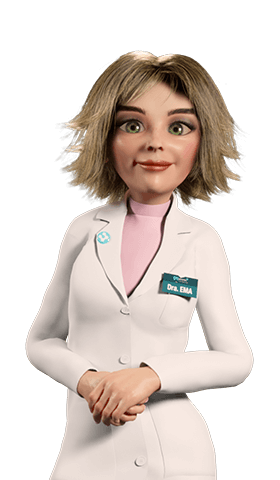Body care
Cellulite - Myths and facts

Cellulite is a reality for many women. We all know what it looks like, but there are still myths that need to be debunked.

A matter of fat
Cellulite is the term used to describe the fat deposits that accumulate under the skin and give it the unsightly “orange peel” appearance: they are small nodules that appear mainly on the thighs, hips, buttocks, and legs.
Although this is a matter of fat, it is not always a matter of weight: cellulite can appear in bodies with extra pounds and also in bodies with an appropriate weight.
Cellulite is classified into three grades:
- Grade 1: no symptoms and only detected in microscopic exams.
- Grade 2: the skin is paler and presents lower elasticity.
- Grade 3: visible lumps and bumps under the skin
Although it can affect both sexes, cellulite is more common in women - approximately 80% of women may experience some type of cellulite at some point in their lives - partly because of their greater tendency to accumulate certain types of fat. Although it is not a serious disease, cellulite can affect self-esteem and, therefore, the quality of life of the people who suffer from it.

Why women?
Cellulite is more common in women because:
- There is more fat - 20 to 25% versus 10 to 15%
in men; - Fat cells (group of cells responsible for fat storage) in women are arranged differently than in men, allowing more fat to be stored;
- Female hormonal changes can lead to an increased cellulite formation coinciding with moments such as puberty, pregnancy, and menopause.
In addition to gender, there are other factors:
- Genetics: it determines the location and quantity of fat cells;
- low metabolism: fat wear is delayed, favouring its accumulation;
- Age: over the years, fibres lose consistency and tone;
- Hormones: hormonal changes associated, for example, with taking an oral contraceptive can contribute to the development of cellulite;
- Lack of or insufficient physical activity;
- Food too rich in fats and carbohydrates and low in vitamins and minerals.

Common sense and persistence
Once formed, cellulite sets in and will not disappear easily. It is not possible to eliminate it, but it is possible to reduce it. Thus, it is essential to:
- Eat a balanced diet, favouring vegetables (for example, broccoli), fruits (like watermelon), lean proteins (poultry and fish) and slow-release carbohydrates (from whole rice or pasta), avoiding saturated fats, salt, and sugar;
- Increase water intake (about two litres per day) and reduce alcohol consumption;
- Practice physical activity on a regular basis in order to burn excess calories and reduce stress;
- Avoid wearing very tight clothing as it hinders blood circulation and may contribute to the development of cellulite;
- Do not smoke and avoid standing or sitting for too long;
- Increase your vitamin C intake. Collagen provides firmness to the skin and so, when the skin is fractured it is also adversely affected, losing elasticity and making fat deposits more apparent. To avoid this, remember to eat foods rich in vitamin C, such as oranges, grapefruit, or papayas, as it stimulates the synthesis of collagen in the skin.

Some products and techniques can also help if used as a complement to a healthy lifestyle.
Health products – based on substances such as caffeine, retinols, or alfa-hydroxy acids and extracts from certain plants, present in the form of cream, lotion, gel, and transdermal patches. If you are pregnant or breastfeeding, do not start any kind of treatment without talking to your doctor or pharmacist.
Anti-cellulite techniques – manual massages or specific techniques (such as acoustic wave technology, endermologie or laser) can also be useful.

Regarding cellulite, it is important to know that there are no quick or definitive solutions:
- Cellulite is persistent, so it is necessary to fight against it continuously throughout the year;
- Health products and slimming techniques do not, by themselves, produce the desired effect: combine a cream or gel, recommended by your pharmacist, and self-massage intensively the area affected with cellulite on a daily basis;
- To achieve long-lasting results, you need to combine a healthy diet with regular physical activity to strengthen your muscle structure and balance the consumed fats and those that are spent.
Sources
iSaúde
Farmácia Distribuição Magazine
Também lhe poderá interessar
Dermatology
Wrinkles are natural. But seriously, who likes them?
Body care






